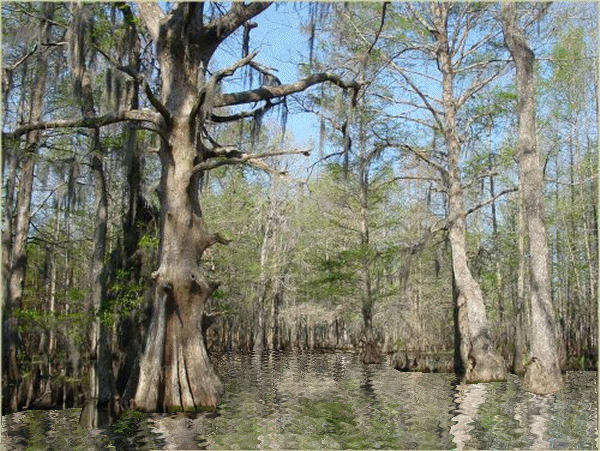LAISSEZ LES BONS TEMPS ROULER





The French province of Acadia (today's Nova Scotia and surrounding regions) was settled in the 1600s by French colonists, but the area became a British possession soon afterwards. In 1755, as war neared between France and England, the British authorities demanded that the Acadians renounce their Roman Catholic faith and swear allegiance to the Crown. The Acadians refused and the mass exile that followed is well known to all who have read Henry Wadsworth Longfellow's "Evangeline."
The migration of the French Acadians to Louisiana was neither smooth nor immediate. Many were shipped to the New England colonies, others to the West Indies or back to France, and many wandered for twenty years before learning that they were welcome in the predominantly French territory of Louisiana.
Cajun cooking may be a first cousin to the Creole cuisine of New Orleans, but there is none other quite like it in the world for the imagination of its dishes or the artistic robustness of its seasoning. Favorite Cajun dishes include jambalaya, gumbo, turtle sauce piquante, andouille sausage, boudin (a pork and rice sausage), soft-shell crab, stuffed crab, a hundred shrimp and crawfish dishes and dozens more.
Cajun music can be lively or melancholy - and sometimes both at once. The traditional instruments are fiddle, accordion and triangle, and those still dominate (although drums and guitars have found their way into Cajun bands in recent years). Like the spoken language of the Cajuns, the lyrics of their songs are part French, part English.
The early French and Spanish settlers became known as Creoles. Groups of Acadians settled in Louisiana after the late 1760s, after they were driven from their homes in Acadia (Nova Scotia). Acadians are often called Cajuns. Baton Rouge is the capital, and New Orleans is the largest city.
Louisiana is also known as The Bayou State for it's hundreds of sluggish streams called bayous. Tangled marsh grasses and cypress trees are draped with spanish moss grown between the bayous and lakes. Eastern brown pelicans live throughout the bayou region, giving Louisiana yet another nickname, The Pelican State.
The state has rich natural resources. Large crops of cotton, rice, and sweet potatoes come from its plantations and farms. Lonely fur trappers of the swamps and woodlands gather more fur-bearing animals than those of any other state or Canadian providence. Forest industries cut millions of dollars worth of lumber and pulpwood from the forests that cover about half of the state. Louisiana fishermen catch the nation's largest haul of shrimp.
Louisiana's natural beauty and old world charm attract millions of tourists each year. People from all parts of the US travel to New Orleans for the city's great carnival, Mardi Gras, in February or March. Tourists enjoy listening to New Orleans-style Jazz in cafes along Bourbon Street. The stately plantation homes stand amid fields of cotton or sugar cane in several sections. Descendants of the Acadians still live in the bayou country.
Many of the people have French ancestors; and the French language is still spoken in many regions today. Louisiana is the only state that bases many of its laws on the Code Napoleon, the laws Napoleon Bonaparte introduced in France. The units of local government in Louisiana are called parishes instead of counties. The idea of parishes developed from the Roman Catholic Church districts organized by Spanish colonial governors.
Most of Louisiana was once part of an ancient bay of the Gulf of Mexico. The Mississippi and other rivers flowing down from the north deposited vast amounts of silt in the bay until the entire area became land. The silt has raised the level of many river beds, and some rivers are higher than the surrounding backlands. About one third of Louisiana would be covered with water each time the Mississippi River flooded if it weren't for levees.



